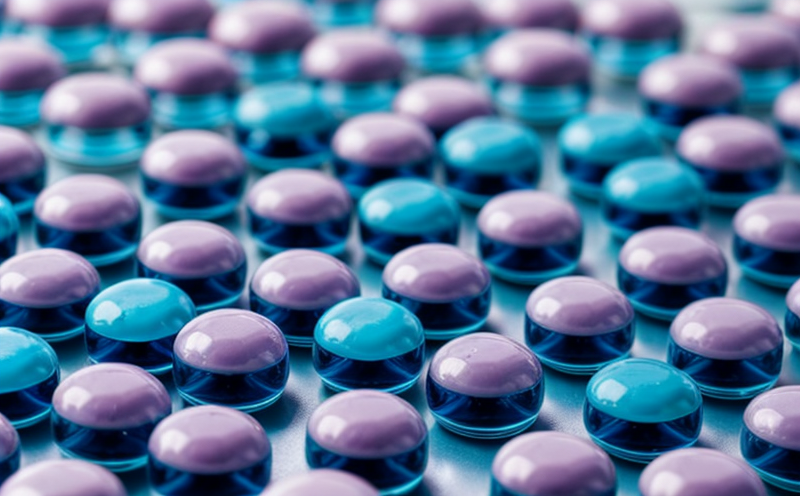USP 61 Microbiological Examination of Non Sterile Products Validation Method Development Test
The United States Pharmacopeia (USP) Chapter 61, "Microbiological Examination of Non-Sterile Products," is a pivotal guideline for ensuring the safety and quality of pharmaceutical products. This chapter covers various microbiological tests designed to evaluate the microbial load or contamination levels in non-sterile medicinal products, including excipients, over-the-counter medications, dietary supplements, and more.
The primary objective of USP 61 is to provide a framework for validating the effectiveness of microbiological testing methods used in pharmaceutical manufacturing. Validation ensures that the analytical method employed during quality control consistently provides accurate results under defined conditions. This process is critical as it helps manufacturers meet regulatory requirements and ensure product safety.
The test involves several steps, including sample preparation, inoculation into appropriate media, incubation to allow microbial growth, and final enumeration of colonies or other indicators. The USP recommends the use of specific media such as Nutrient Agar (NA), Sabouraud Dextrose Agar (SDA) for fungi, and Thioglycollate Broth for anaerobic bacteria.
The validation process itself is comprehensive and involves multiple phases:
- Method development
- Method qualification
- Method transferability demonstration
- Repeatability testing to ensure consistent results
- Ruggedness assessment to evaluate variability in the method
The success of this validation process ensures that any detected microbial contamination can be traced back to specific operational parameters or production processes, which is critical for quality assurance and compliance.
For pharmaceutical manufacturers, adhering to USP 61 not only helps in complying with regulatory standards but also enhances the credibility of their products. By demonstrating a robust microbiological examination process, companies can build consumer trust and meet stringent market demands.
| Phase | Description |
|---|---|
| Method Development | This phase involves defining the analytical method, selecting appropriate media, and optimizing incubation conditions. |
| Method Qualification | The method is validated under controlled conditions to ensure it meets predefined criteria for accuracy and precision. |
| Method Transferability Demonstration | This step ensures that the method can be used consistently across different facilities or laboratories. |
| Repeatability Testing | The test is repeated multiple times to ensure consistent results, which are then compared with expected values. |
| Ruggedness Assessment | This phase evaluates how the method performs under varying conditions to confirm its robustness and reliability. |
Why It Matters
The importance of USP 61 cannot be overstated, especially in the context of pharmaceutical microbiology. The presence of even low levels of microbial contamination can lead to serious health risks for patients. Non-sterile products, such as over-the-counter medications and dietary supplements, are particularly vulnerable due to their extended shelf life and frequent handling by consumers.
By ensuring that all non-sterile products undergo rigorous microbiological examination using validated methods, USP 61 helps prevent contamination issues. This, in turn, enhances product safety and reduces the risk of adverse effects on patients. Compliance with this chapter is not just a regulatory requirement; it is a critical aspect of responsible pharmaceutical manufacturing.
Moreover, adherence to USP 61 can also lead to improved production efficiency by identifying potential sources of contamination early in the process. This proactive approach allows manufacturers to make necessary adjustments before they impact product quality or patient safety.
In summary, USP 61 is essential for maintaining high standards of product safety and quality in pharmaceutical manufacturing. Its rigorous validation process ensures that non-sterile products are free from harmful microbial contaminants, thereby safeguarding public health.
Scope and Methodology
| Step | Description |
|---|---|
| Sample Preparation | The product is diluted or prepared in a suitable medium to ensure accurate microbial enumeration. |
| Inoculation | The prepared samples are inoculated into appropriate media, such as Nutrient Agar for bacteria and Sabouraud Dextrose Agar for fungi. |
| Incubation | The inoculated media are incubated under controlled conditions to allow microbial growth. |
| Enumeration | After the incubation period, colonies are counted and evaluated for identification purposes. |
Why Choose This Test
- Comprehensive validation of microbiological testing methods
- Ensures consistent and accurate results across different facilities and laboratories
- Promotes compliance with international standards (USP 61)
- Reduces the risk of product contamination, enhancing safety for end-users
- Supports efficient production processes by identifying potential contamination sources early
- Aids in meeting regulatory requirements and ensuring product quality





